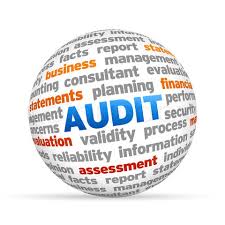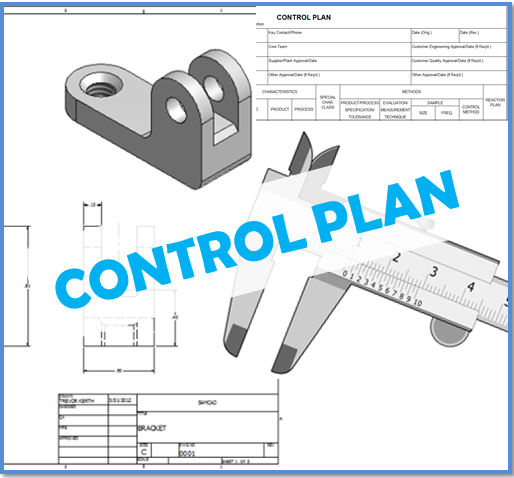Change Management / Engineering Change (ECN)
“It is not the strongest of the species that survive, nor the most intelligent, but the one most responsive to change” – Charles Darwin
Change is part of our life. It may be good or bad. Just like weather changes, our hair turns grey, conventional IC Engine Vehicle (Internal Combustion) is changing to Electric Vehicle, our preference to purchase online rather than from nearby grocery shop, Human intelligence is shifting to Artificial Intelligence (AI) or Coronavirus impacting the world.
Change management is the most important process in any organization. We all are witnessing some wonderful examples of effective & ineffective implementation of Change Management in our personal and official life. In any industry, Product/Service design & manufacturing process keeps on changing depending upon the improvement in the technology, contingencies and many more reasons. The quality of change management reflects the robustness of the process and competency of the people working in the organization.
As per ISO 9000: 2015, following are the 2 definitions related to Change.
Configuration Management (Clause 3.3.9): It is coordinated activities to direct and control configuration.
Note: establish and maintain control of a product or service and its product configuration information throughout the life cycle of the product.
Change Control (Clause 3.3.10): Activities for control of the output after formal approval of its product configuration information.
Some of the IATF subscribing OEM have their specific requirements related to Engineering Change.
| FCA, USA & Italy | SQ00012 Forever Requirements |
| Renault | As per ANPQP Chapter 9 |
| GM | Written Customer Approval or waiver, Trial Runs |
| Daimler | MBST 13 / 18, Section 4 |
| VW | As per Formel-Q-Konkret Chapter 5, VW 01155 |
As per ISO 9001 & IATF 16949 Standard, clause 7.5.3.2.2, 8.3.6, 8.3.6.1, 8.5.6 & 8.5.6.1 following are the key expectations.
- Documented Process: Organization has to prepare a procedure (Turtle diagram) how they will
review the requirements related to change.
distribute the changes to all the concerned process owners.
implement the change related to product design or manufacturing process.
2. Response Time: Organization has to complete the review within 10 working days of receipt of notification of engineering standards/specifications changes (only IATF 16949 requirement). The intent is to ensure that that there is no delay in giving feedback to the customer whether it is possible for the organization to make changes or not. Organization/Customer can define their own timeline for review.
3. Evaluation: The organization has to evaluate the changes before implementation. The changes could be related to Fit (ability to connect with mating part), Form (related to dimension, Weight, Size, Visual), Function (purpose of the part), Performance, Durability (how long it will perform) etc. Different type of risk analysis techniques like DFMEA, PFMEA etc. can be used for evaluation. This evaluation is also applicable to any changes related to Supplier too.
4. Verification: The intent of verification is to check whether design and development outputs (amended PPAP documents) have met the design and development input requirements for changes (like change in specification, Standard, Dimension, the addition of Special Characteristic etc.).
5. Validation: The intent of Validation is to ensure that the resulting product (after changes) is capable of meeting the requirements for the specified application or intended use (as per Engineering change requirement). Wherever practicable, validation shall be completed prior to the delivery or implementation of the product/Manufacturing process.
6. Approval: Many times, changes are proposed by the organization itself (process improvement / alternate supplier/machine development/cost saving/Location change etc.) but it may be impacting fit/function/performance at customer end. If needed, an organization has to take approval from the customer before implementing any changes. At times, there may be a time gap for implementation. In such cases, waiver/concession from the customer may be needed for Quantity/Time (applicable to Supplier too).
7. Record: Once a change is implemented, it is equally important to document & ensure that on which date, changes have been actually implemented in the manufacturing process. It will also include up-dation of documents at different stages. For products with embedded software, the organization shall document the revision level of software and hardware as part of the change record. The retention of record should be as per Customer Requirements (CR).
Example: If an Engineering Change results in changing dimension of a component from 5.5 mm to 5.7 mm. The possible documents which may need review & change include
- Product drawing
- Component drawing
- All relevant PPAP documents including following
- DFMEA
- Process Flow Chart
- PFMEA
- Control Plan
- Work Instruction
- Communication to Supplier if purchased
- Changes in Supplier Control plan & Work instruction
- In-process Inspection sheet
- Pre-despatch Inspection sheet
- SPC chart & comments (if Special Characteristic)
- MSA Study (if it has resulted in a change in measuring instrument)
- May be few more….
Benefits to Top Management
- Customer satisfaction
- Compliance to customer requirements
- Improved productivity / Efficiency of the manufacturing process
- Robustness of the change management
Some question to ponder:
- How often the organizations monitor the actual date of implementation and maintain a record of the manufacturing process?
- How often all the relevant process owners (Manufacturing, Quality, Purchase, Maintenance, Supplier etc.) are aware of the Engineering Changes?
- How often all the relevant documents like DFMEA, Process Flow, PFMEA, Control Plan, Work Instruction, In-process/Final Inspection Standard, Packing Standard, Supplier PPAP etc. are reviewed and updated?
References:
IATF 16949: 2016
ISO 9000:2015
This is the 42nd article of this Quality Management series. Every weekend, you will find useful information that will make your Management System journey Productive. Please share it with your colleagues too.
Your genuine feedback and response are extremely valuable. Please suggest topics for the coming weeks.

Recent Posts
Recent Comments
- Bhavya Mangla on Fear Begets Fear: Tame the Beast Within
- OnlyWikis on Fear Begets Fear: Tame the Beast Within
- Bhavya Mangla on What is the key difference between RPN (Risk Priority Number) and Action Priority (AP) -FMEA?
- Bhavya Mangla on What is the key difference between Cp and Cpk?
- Devendra Negi on What is the key difference between Cp and Cpk?


Awesome